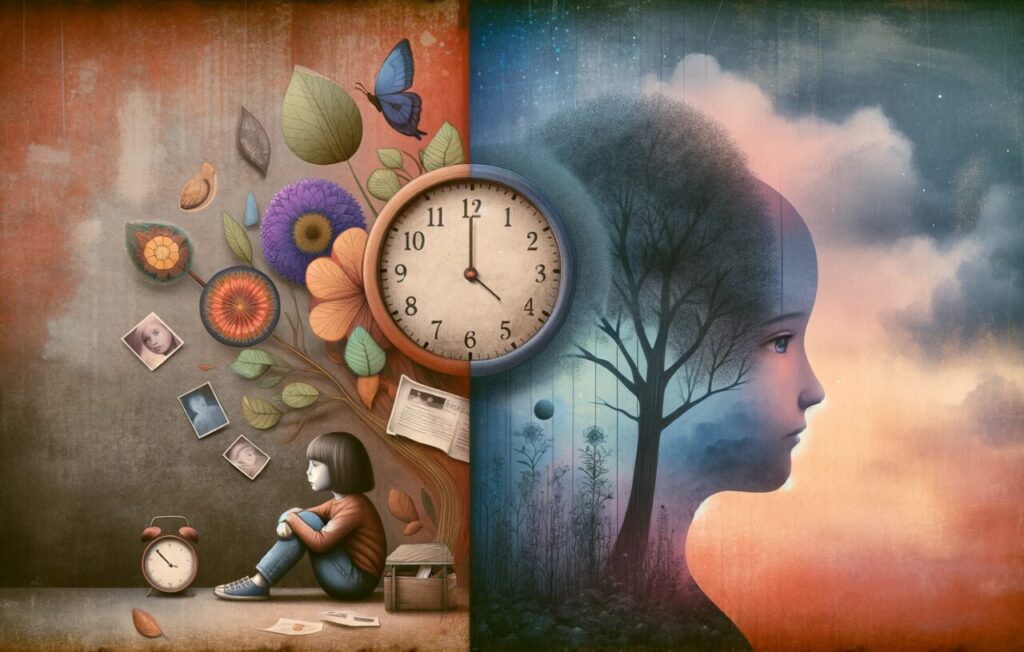The American Psychological Association defines trauma as the emotional response to an accident, natural disaster, or abuse. There are short-term reactions to traumatic events, such as denial or shock, and long-term reactions to traumatic events, such as uncontrollable emotions, sudden flashbacks, and physical symptoms. Experience of or exposure to traumatic events can lead to long-lasting psychological and physical effects. Research shows that children and adolescents who experience or are exposed to traumatic situations can struggle emotionally and socially in adulthood.
Childhood Trauma
There are a wide range of traumatic events that children and adolescents may be involved in or may witness. These include bullying, sexual abuse, medical stress, community violence, natural disasters, and terrorism. Bullying is an action that is done with the intent of inflicting psychological or physical harm to someone else. Sexual abuse encompasses any interaction between a child and an adult in which the child is sexually and unwillingly exploited or harmed. Medical stress involves the psychological and physical responses of children and families to serious illnesses, complex medical concerns, or frightening treatment experiences. Community violence is the exposure to interpersonal violence in public places. Based on geographical location, natural disasters may include hurricanes, tornadoes, wildfires, floods, and blizzards. Terrorism is purposeful violence in the form of shootings, bombings, and massive attacks against communities and people. Without proper treatment for the psychological or physical effects of these traumatic events, these psychological and physical effects may remain present and become increasingly problematic in adulthood.
Adult Mental Health Concerns
Research supports a strong association between childhood exposure to traumatic experiences and adult mental health concerns. Children who are exposed to several of these traumatic experiences throughout the course of their childhood are three times at higher risk of developing mental health problems in adulthood. These outcomes may range from more severe concerns, such as the development of mental health diagnoses like Post-Traumatic Stress Disorder (PTSD) and Substance Use Disorder (SUD), to less severe but still distressing concerns, such as poor quality of life and a lower quantity of social supports. Many childhood traumatic events can also lead to a variety of adult mental health problems, such as anxiety, depression, mood instability, and psychosis. Sexual abuse and physical abuse are connected with a wide range of mental health diagnoses in adulthood, whereas emotional abuse in childhood tends to be more highly correlated with diagnoses of anxiety disorders in adulthood.
It is important to be aware of the traumatic experiences that can occur in childhood and adolescence. Psychotherapy can be helpful in managing the psychological and physical effects of trauma. At Restorative Psychological Services, both children and adults can receive evidence-based and research-supported psychotherapeutic treatment to help with understanding their underlying trauma and to work on overcoming the psychological and physical distress caused by their trauma. Although trauma can happen to any person at any time, there are resources out there to help you cope, and our psychotherapists are ready to support you!
For more information, please visit these resources:
American Psychological Association. (2023). Trauma. https://www.apa.org/topics/trauma
Copeland, W. E., Shanahan, L., Hinesley, J., Chan, R. F., Aberg, K. A., Fairbank, J. A., van den Oord, E., & Costello, J. (2018). Association of childhood trauma exposure with adult psychiatry disorders and functional outcomes. JAMA Network Open, 1(17), 1-11. https://doi.org/10.1001/jamanetworkopen.2018.4493
Hogg, B., Gardoki-Souto, I., Valiente-Gomez, A., Ribeiro-Rosa, A., Fortea, L., Radua, J., Amann, B. L., & Moreno-Alcazar, A. (2022). Psychological trauma as a transdiagnostic risk factor for mental disorders: An umbrella meta-analysis. European Archives of Psychiatry and Clinical Neuroscience, 273, 397-410. https://doi.org/10.1007/s00406-022-01495-5
McKay, M., T., Cannon, M., Chambers, D., Conroy, R. M., Coughlan, H., Dodd, P., Healy, C., O’Donnell, & Clarke, M. C. (2021). Childhood trauma and adult mental disorder: A systematic review and meta-analysis of longitudinal cohort studies. Acta Psychiatrica Scandinavica, 143(3), 189-205. https://doi.org/10.1111/acps.13268
Schneider, F. D., Loveland-Cook, C. A., Salas, J., Scherrer, J., Cleveland, I. N., & Burge, S. K. (2017). Childhood trauma, social networks, and the mental health of adult survivors. Journal of Interpersonal Violence, 35(5-6), 1-23. https://doi.org/10.1177/0886260517696855
Substance Abuse and Mental Health Services Administration. (2022). Trauma and violence. https://www.samhsa.gov/trauma-violence
The National Child Traumatic Stress Network. (2023). What is child trauma? https://www.nctsn.org/what-is-child-trauma
Wu, N. S., Schairer, L. C., Dellor, E., & Grella, C. (2010). Childhood trauma and health outcomes in adults with comorbid substance abuse and mental health disorders. Addictive Behaviors, 35(1), 68-71. https://doi.org/10.1013/j.addbeh.2009.09.003
